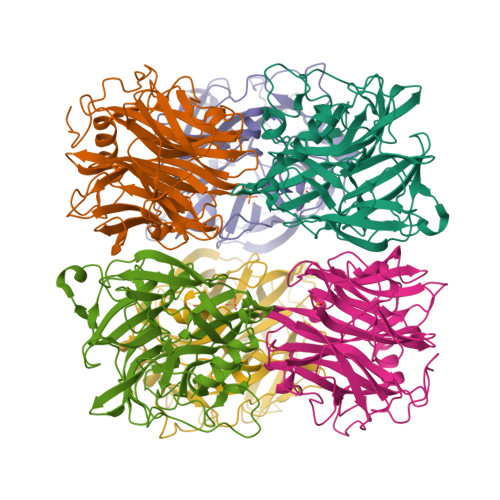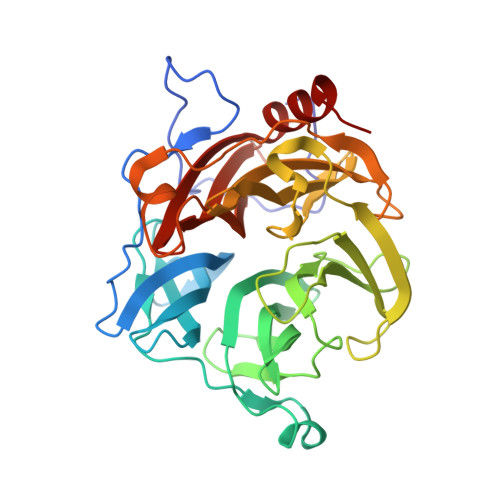Structural insights into the difference in substrate recognition of two mannoside phosphorylases from two GH130 subfamilies.
Ye, Y., Saburi, W., Odaka, R., Kato, K., Sakurai, N., Komoda, K., Nishimoto, M., Kitaoka, M., Mori, H., Yao, M.(2016) FEBS Lett 590: 828-837
- PubMed: 26913570
- DOI: https://doi.org/10.1002/1873-3468.12105
- Primary Citation of Related Structures:
5AY9, 5AYC, 5AYD, 5AYE - PubMed Abstract:
In Ruminococcus albus, 4-O-β-D-mannosyl-D-glucose phosphorylase (RaMP1) and β-(1,4)-mannooligosaccharide phosphorylase (RaMP2) belong to two subfamilies of glycoside hydrolase family 130. The two enzymes phosphorolyze β-mannosidic linkages at the nonreducing ends of their substrates, and have substantially diverse substrate specificity. The differences in their mechanism of substrate binding have not yet been fully clarified. In the present study, we report the crystal structures of RaMP1 with/without 4-O-β-D-mannosyl-d-glucose and RaMP2 with/without β-(1→4)-mannobiose. The structures of the two enzymes differ at the +1 subsite of the substrate-binding pocket. Three loops are proposed to determine the different substrate specificities. One of these loops is contributed from the adjacent molecule of the oligomer structure. In RaMP1, His245 of loop 3 forms a hydrogen-bond network with the substrate through a water molecule, and is indispensible for substrate binding.
Organizational Affiliation:
Graduate School of Life Science, Hokkaido University, Sapporo, Japan.



















